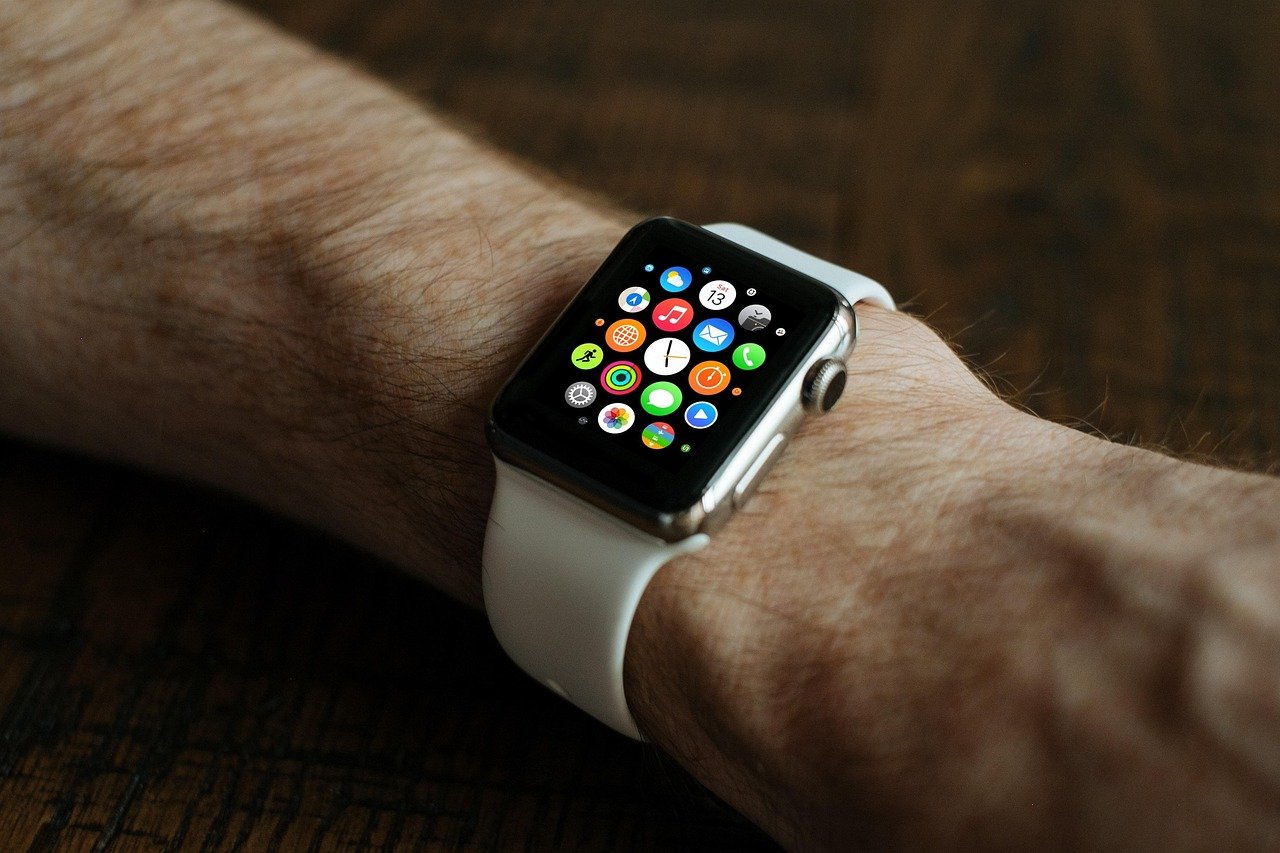The Invisible Revolution on Your Wrist
What if I told you that the smartwatch on your wrist could be silently adjusting your emotions without you even knowing? It’s not science fiction anymore – it’s the quiet reality of wearable AI that’s taking shape right under our noses. A research team has unveiled a groundbreaking technology that can recognize human emotions in real time, with systems fully integrated with data processing circuits for wireless data transfer, enabling real-time emotion recognition. The technology isn’t just tracking your steps or heart rate; it’s reading your mood and, in some cases, subtly trying to influence it. Think of it like having a tiny psychologist on your body, one that never takes a break and always knows exactly how you’re feeling. The implications are both fascinating and deeply unsettling. The global wearable AI market size was valued at USD 38.85 billion in 2024 and is projected to grow from USD 48.82 billion in 2025 to USD 260.29 billion by 2032, exhibiting a CAGR of 27.0% during the forecast period.
How These Digital Mind Readers Actually Work
The magic behind mood-detecting wearables lies in their ability to monitor multiple biological signals simultaneously. Most wearable AI devices include sensors like ECG (for heart rhythm), SpO2 (for blood oxygen), temperature monitors, hydration sensors, and even motion detectors. Your body is constantly broadcasting information about your emotional state through tiny changes in heart rate, skin temperature, and even the way you breathe. These devices are like emotional detectives, piecing together clues from your physiology to create a real-time map of your inner world. Studies proved that when human emotions were experienced and changed (happy, sad, and neutral) the heart rate could reflect the mood, showing that real-time emotional recognition and monitoring could be achieved with available wearable devices. It’s remarkable how something as simple as the rhythm of your heartbeat can reveal whether you’re stressed, excited, or completely at peace. The technology has advanced to the point where these devices can detect emotional patterns you might not even be aware of yourself.
The Subtle Art of Mood Manipulation

Once your wearable AI identifies your emotional state, the real intrigue begins – it can actually try to change how you feel. These devices employ various mechanisms like gentle vibrations, light pulses, or sound frequencies designed to promote relaxation or alertness. A smartwatch with Emotion AI can monitor stress levels throughout the day and provide feedback or relaxation suggestions when high stress is detected, with continuous monitoring helping individuals manage their mental health more proactively and effectively. Some advanced prototypes even use neurostimulation techniques to subtly modulate brain activity associated with mood regulation. It’s like having a mood coach that never sleeps, constantly working behind the scenes to nudge your emotions in a more positive direction. The interventions are typically so subtle that you might not even notice them happening – you just find yourself feeling a bit better without knowing why. Imagine your smartwatch detecting rising stress levels during a difficult meeting and automatically triggering a brief, calming vibration pattern that helps you stay composed.
The Promise of Invisible Mental Health Support

For millions of people struggling with anxiety, depression, or stress, these mood-altering wearables could be life-changing. Wearable AI can offer great promise in providing mental health services related to anxiety and depression, helping individuals conduct prescreening assessments of mental health and well-being without an initial hospital or clinical encounter. Think about having a device that could detect the early warning signs of a panic attack and immediately provide calming interventions before you even realize what’s happening. These wearables might improve focus and productivity by reducing negative emotional states or enhancing positive ones throughout the day. They could serve as a continuous, non-invasive support system, potentially reducing the need for medication or therapy in some cases. Over 25% of wearable devices are anticipated to incorporate emotion AI for mental health monitoring by 2023. The technology offers the tantalizing possibility of democratizing mental health support, making it available 24/7 to anyone with a smartwatch.
When Your Smartwatch Knows You Better Than You Know Yourself

The latest emotion-detecting wearables use sophisticated AI algorithms that learn your unique patterns over time. Machine learning wearables begin to analyze collected data, finding patterns and learning from habits, improving over time – your device might notice that your heart rate spikes every Monday morning, connecting this to your sleep pattern and suggesting breathing exercises when stress is likely. This personalization means the device becomes increasingly accurate at predicting your emotional needs. It’s like having a digital therapist that studies your every reaction, building a comprehensive profile of what triggers your stress, what makes you happy, and what helps you relax. Research emphasizes the need for increased research in personalized emotion recognition models given that they outperform generalized models in certain contexts, demonstrating that personalized machine learning models for emotion classification are viable and can achieve high performance. The device might learn that you’re more prone to anxiety on Sunday evenings and proactively suggest calming activities before you even feel the stress building.
The Real-World Players Changing Everything

Major tech companies are already making significant moves in this space. The Evie Ring, which was unveiled at CES 2024, is a revolutionary advancement in women’s health tracking with unmatched insights into mood swings, menstrual health, and more, with sophisticated artificial intelligence algorithms that employ trend analysis to establish correlation between various health data. Meanwhile, companies like Humane are developing AI pins that offer contextual assistance based on your surroundings and emotional state. California startup Humane’s Ai Pin, a voice-controlled device with a projected interface, aims to be a personal assistant, joining established players like Meta (with Ray-Ban smart glasses) and Chinese companies TCL and Oppo, all offering AI-powered spectacles with voice-controlled chatbot functionality. These aren’t just concepts anymore – they’re real products you can buy today. In October 2023, Rewind AI, Inc. introduced the Rewind Pendant, which is a wearable device on the neck that tracks your conversation and transcribes, encrypts, and stores it in smartphones. The race is on among tech giants to create the most sophisticated emotion-aware wearable.
The Creepy Factor That Nobody Talks About

But here’s where things get uncomfortable – these devices are collecting incredibly intimate data about your emotional life. The core privacy and human rights issues with tech wearables have to do with the quantity and the nature of the data that users surrender to their device — and therefore to the company that makes and operates it, and commercializes the data it collects. Every mood swing, every moment of stress, every flutter of excitement is being recorded, analyzed, and stored by private companies. The poll indicates that 72% of US adults are either very or somewhat concerned about AI wearables protecting user privacy. What happens to this data? Who has access to it? Could your employer find out about your mental health struggles through your wearable data? The experience with Apple, Google, Facebook and others is that they are not competent at protecting privacy and hide behind opaque terms of services, with a study showing that “basic technical safeguards have sometimes been improperly established” and health apps manage to take consumers’ private data without express consent. The potential for misuse is staggering, yet most users remain blissfully unaware of what they’re signing away.
The Dark Side of Mood Modification
What if these devices could be used to manipulate your emotions for commercial purposes? Imagine a wearable that detects you’re feeling down and immediately serves you ads for comfort food or retail therapy. Although the current studies have shown that wearable AI can be used for monitoring symptoms of anxiety and depression, continuous tracking of physiological biomarkers could trigger emotional instability and ruminative thinking, with wearable AI potentially providing many false positives, thereby exacerbating or increasing the anxiety or depression of an individual. There’s also the risk of creating emotional dependency – what happens when you can’t function without your mood-regulating device? The technology could potentially be weaponized for more sinister purposes, like influencing voting behavior or consumer choices. As researchers, we are concerned with enmeshment of corporate and research interests and what this can mean for participant data, drawing on the UN Report ‘The right to privacy in the digital age’ to discuss conflicts between corporate and research agendas. The line between helpful intervention and manipulation is dangerously thin.
When Your Wearable Becomes Your Emotional Dictator
There’s a philosophical question lurking beneath all this technology: if a device is constantly adjusting your mood, are you still authentically you? As Zuboff noted in The Age of Surveillance Capitalism, “under the regime of surveillance capitalism, individuals do not render their experience out of choice or obligation but rather out of ignorance and the dictatorship of no alternatives.” Some critics argue that mood-regulating wearables could create a generation of people who never learn to manage their emotions naturally. It’s like having emotional training wheels that never come off. The concern is that we might lose touch with our authentic emotional responses, becoming dependent on artificial interventions to feel normal. Users often skip reading privacy policies when installing apps on wearable devices, and this gap between concerns and behaviors has spurred disputes regarding business ethics between app providers and users when private information is leaked. Are we trading our emotional autonomy for the promise of perpetual happiness?
The Medical Revolution Hidden in Plain Sight
Despite the concerns, the medical applications are genuinely revolutionary. AI in wearable medical devices is projected to enhance disease diagnosis accuracy by over 20% by 2024. Doctors could potentially detect depression or anxiety disorders weeks before traditional symptoms appear, simply by analyzing patterns in wearable data. Currently, there are 300 million people with depression in the world, and predicting their mood can provide better care and prevent dangerous events, while in the field of gaming, emotional changes can be used as an interactive means to change game contents. For people with bipolar disorder, these devices could predict mood episodes and automatically alert healthcare providers or adjust medication dosages. The technology could be particularly valuable for monitoring elderly patients or those with cognitive impairments who might not be able to articulate their emotional distress. It’s like having a 24/7 mental health monitor that never gets tired or forgets to check in.
The Technical Wizardry Behind the Magic
The sophistication of these emotion-detecting systems is truly remarkable. The research team has developed a multi-modal human emotion recognition system that combines verbal and non-verbal expression data, with the core being the personalized skin-integrated facial interface (PSiFI) system, which is self-powered, facile, stretchable, and transparent, featuring a first-of-its-kind bidirectional triboelectric strain and vibration sensor. Some devices can even detect emotions through facial expressions using tiny cameras embedded in smart glasses. EmoGlass is an end-to-end wearable platform that consists of emotion detection glasses and an accompanying mobile application, with single-camera-mounted glasses that can detect seven facial expressions based on partial face images. The algorithms are becoming so advanced that they can distinguish between different types of stress – whether you’re anxious about work, excited about a date, or just had too much coffee. It’s like having a team of psychologists analyzing your every physiological response in real-time.
The Fitness Revolution Goes Emotional
In fitness, Emotion AI can be integrated into wearables to enhance performance and motivation, with traditional fitness trackers measuring physical activity, but with emotion recognition, these devices can offer a holistic approach to health and fitness, analyzing emotional responses to different workouts and helping to identify which exercises boost mood and motivation. Your fitness tracker might learn that you hate running but love dancing, and suggest mood-boosting dance workouts when it detects you’re feeling low. More than 1 in 5 adults in the US regularly use wearable fitness trackers or smartwatches to monitor their health, with around 41% of Americans utilizing such technology. The integration of emotional data with physical activity could revolutionize how we approach exercise, making workouts more enjoyable and sustainable. It’s no longer just about burning calories – it’s about optimizing your entire emotional and physical well-being simultaneously. Some devices can even adjust your workout playlist based on your current mood and energy levels.
The Global Privacy Battleground
Governments worldwide are scrambling to regulate this new frontier. The recent implementation of the General Data Protection Regulation (GDPR) in the EU and states taking initiatives to regulate privacy shows growing regulatory efforts to address these threats. However, the current legal frameworks are struggling to keep pace with the technology. Companies are subject to rules established by the Federal Communications Commission and Federal Trade Commission in the United States (and the California Consumer Privacy Act in California), and to the General Data Protection Regulation in the European Union, but the current legal framework and ethical oversight are not sufficient. Regulatory compliance includes staying abreast of evolving privacy regulations and compliance requirements, including updates to GDPR in wearable IoT and emerging data protection laws, proactively adapting privacy policies and practices to align with regulatory standards and mitigate legal risks. The challenge is creating regulations that protect privacy without stifling innovation in potentially life-saving technology.
The Future Is Already Here

The most startling aspect of this entire conversation is that this technology isn’t coming – it’s already here. In 2024, AI-driven wearables will be passive trackers and proactive assistants capable of analyzing real-time data to provide personalized recommendations for fitness, health management, productivity, and more. By 2024, the global count of wearable AI devices is projected to surpass 1 billion, with analysts expecting that over 30% of consumer wearable devices will feature on-device AI capabilities by 2024. Millions of people are already walking around with devices that can read their emotions, and many don’t even realize it. The question isn’t whether this technology will exist – it’s how we’ll choose to use it and who will control it. The future of Emotion AI and wearable technology is bright, with ongoing advancements promising even more sophisticated applications, and as machine learning algorithms become more refined and wearable sensors more advanced, we can expect Emotion AI to play an increasingly integral role in our daily lives.
So the next time you glance at your smartwatch, remember – it might just be glancing back at your soul. The device on your wrist could be secretly working to make you happier, calmer, or more productive, all while learning intimate details about your emotional life that you’ve never shared with another human being. The future of mood modification is here, quietly humming on our bodies, and we’re all part of the experiment. What do you think – would you want a device that could secretly improve your mood, even if it meant sacrificing some privacy?

